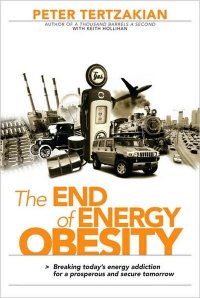Winning Gold in Changing Energy Markets
 The breakdown of an electric ice resurfacer at Vancouver’s “green” Olympics, wins a gold medal for Energy Story of the Week. Adding insult to environmental injury, the story goes that trusty carbon-spewing models had to be brought in from Calgary. Thankfully, Canada’s oil and gas industry saved the speed skating competition.
The breakdown of an electric ice resurfacer at Vancouver’s “green” Olympics, wins a gold medal for Energy Story of the Week. Adding insult to environmental injury, the story goes that trusty carbon-spewing models had to be brought in from Calgary. Thankfully, Canada’s oil and gas industry saved the speed skating competition. Purveyors of propane and other petroleum products must have had a strong urge to interpret the irony of the situation as a broader symbol of the impenetrable dominance of hydrocarbons in our modern society. To be sure, petroleum also rescued Olympic events on Cypress Mountain as diesel thirsty trucks and kerosene burning helicopters ferried tonnes of snow to venues anxiously starved for winter weather (it’s a good thing the helicopters weren’t electric).
Yet those in the oil and gas business, or indeed in any energy-related enterprise, should be careful about too much conceit these days.
We are in an environment where technological innovations are changing the energy arena very quickly and all positions of dominance are being routinely challenged. To be sure electric vehicles are not likely to be a threat to oil barons in the next few years, but having personally test-driven an all electric vehicle a few weeks ago I can tell you that the value proposition of rechargeable cars is on the eve of being compelling. I’ll save that for another story, but the broader issue here is that serious competitive threats – and great opportunities – abound in all facets of the energy industry, not just in the future, but right now.
In fact, the real Energy Story of the Week came in the form of a couple of announcements: two corporate proposals hoping to bring natural gas and liquids from Pennsylvania’s Marcellus shale into Canadian markets. First Nova Chemicals and Buckeye Partners announced a joint memorandum of understanding to develop an NGL pipeline from Pittsburgh to Sarnia. Then, Union Gas announced that they would conduct an open season for a pipeline service that would allow for the shipping of up to 0.75 Bcf/d of natural gas from the Marcellus into Kirkwall, Ontario and through to Dawn.
While there have been countless pipeline expansions and extensions announced recently to transport Marcellus gas into the US Northeast, this is the first major export proposal to pit Pennsylvania gas head-to-head with western Canadian gas, on Canadian soil.
It’s interesting that the 3,500 kilometer TransCanada main line, from Alberta to Ontario and Quebec, was built in 1958 to ensure eastern Canadian energy security and also allow the west to export its natural gas to lucrative markets in the US Northeast. Last week’s announcements represent the seeds of a major challenge to both those 50 year-old premises.
A quick conclusion might be to think that low-cost Marcellus shale gas pushing across the border spells the end of the western Canadian natural gas industry. A more balanced conclusion is that the character of how North America is supplied its natural gas is going to change and that there will be winners and losers across the continent.
For example, it’s well known that western Canada also has large-scale, low-cost natural gas resource plays. In northeast British Columbia, the Montney and Horn River are looking like they are the Marcellus equivalents of the west. Other plays could follow, especially as drilling and completion technologies continue to improve. The big issue is that pipeline transportation costs from BC to eastern Canada, and into the US, are a burden that makes western Canadian gas uncompetitive against a resource like the Marcellus that is right underneath the feet of customers in eastern states.
While it may become increasingly uneconomic to flow western gas all the way to the east, the opportunity for Canadian gas producers with vast, low-cost shale and tight gas resources is to push out high-cost, conventional US production in the western half of the continent. Eventually, an LNG export terminal could help producers’ take market share in the Pacific Basin too.
Of course, the evolving nature of North America’s natural gas supply is complicated, very dynamic and very competitive. Yet most of all it highlights how quickly a decades-old, dominant energy model can be forced to change in the span of a few years by virtue of technological change and entrepreneurship. In the end, what it really means is that the gold medal winners in future energy markets are going to be low-cost producers that can get their products to market most efficiently. To be sure, no medals will be awarded for producers of products that are high-cost – and certainly none for products that don’t work.
Peter Tertzakian, Chief Energy Economist and Managing Director of ARC Financial Corp. is the bestselling author of A Thousand Barrels a Second and The End of Energy Obesity.
Author: Peter Tertzakian
You can return to the main Market News page, or press the Back button on your browser.

